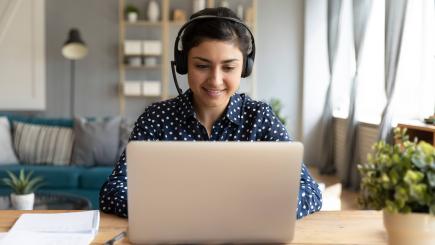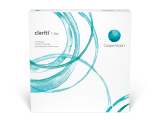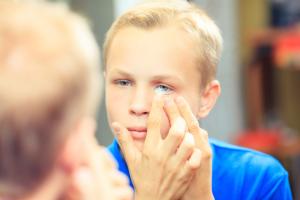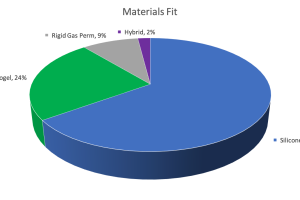by Molly Otworth

Digital eye strain, originally referred to as computer vision syndrome, describes issues related to prolonged digital device use1. With the average American worker spending approximately 7 hours a day on a computer1, not even factoring in phones and tablet use at home, knowing the appropriate questions to ask while screening patients is a must.
When patients complain of headache, eye strain, dry eyes, neck or shoulder pain, and blurred vision these are all signs of possible digital eye strain1. These aren’t the only symptoms patients may experience, but when they complain of these types of problems follow up questions should be asked to narrow down how you and the doctor can help.
Asking each patient about the amount of time they spend using digital devices is a great starting point. Be sure to include not only computer time at work, but time spent at home on phones and tablets. It is important to also clarify whether the patient is wearing any type of correction such as glasses, contacts, or reading glasses.
Inquiring about the patient’s environment is also an important topic. This should include what the lighting is like when they are using their devices. How their digital device is positioned and how their head and neck are positioned in relation to the deceive. Poor posture and poor lighting are factors that can make digital eye strain worse1. Also, the distance a patient is sitting from the computer or the distance they are holding a phone away from their face is great information for the doctor to consider when looking at options for these patients.
Knowing the right questions to ask while taking a patient’s history is a big part of being a great technician. Relating to patient’s during screening questions is a great way to create a relaxed environment. And proactively informing patients that there are contact lens options like MyDay Energys® and Biofinity Energys® that are designed for use on digital devices can help pave the way to providing meaningful solutions that fit with their unique lifestyles.
Molly Otworth is an ABO-NCLE certified optician based in Ohio.
1.AOA. Computer vision syndrome (DIGITAL eye strain). AOA.org. https://www.aoa.org/healthy-eyes/eye-and-vision-conditions/computer-vision-syndrome?sso=y. Accessed August 28, 2021.








